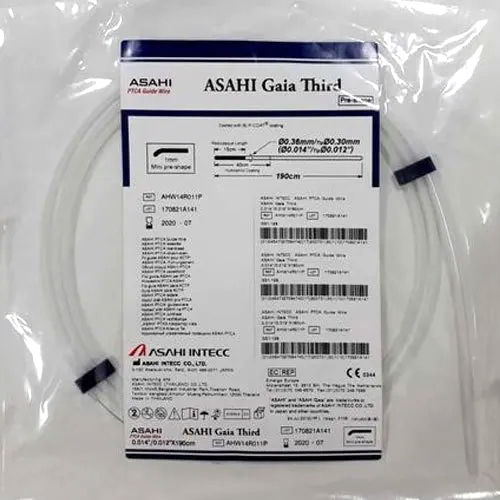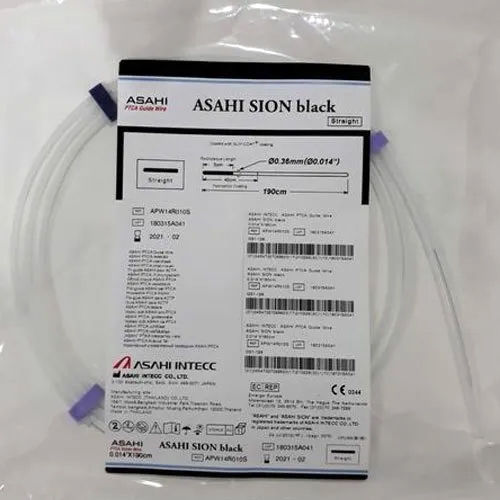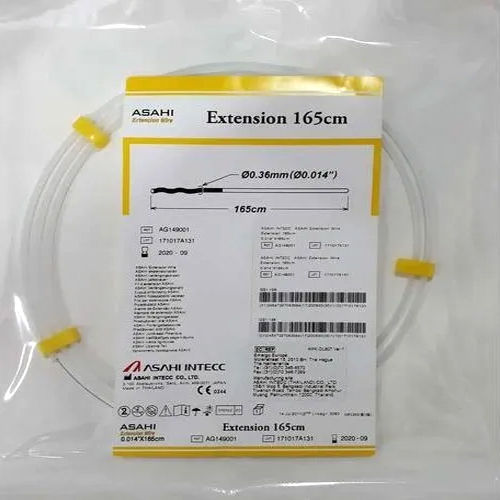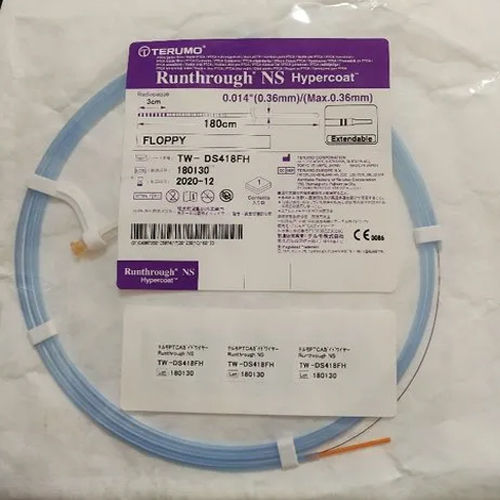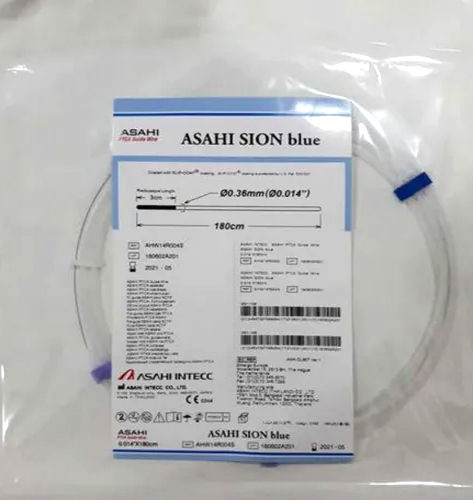Asahi Gaia Third PTCA Guide Wire
Product Details:
Asahi Gaia Third PTCA Guide Wire Price And Quantity
- 50 Piece
- 7200 INR/Piece
Asahi Gaia Third PTCA Guide Wire Trade Information
- 10000 Piece Per Week
- 4 Days
Product Description
An additional asahi Gaia Third guide wire used during a cardiac catheterization operation to help with navigation and access to coronary arteries is referred to as an asahi gaia third PTCA (percutaneous transluminal coronary angioplasty) guide wire. A guide wire is initially introduced into a peripheral artery during a PTCA operation, either through the radial artery in the wrist or the femoral artery in the groyne. The coronary arteries are eventually reached once the guide wire has been advanced through the arterial system. In some circumstances, a third guide wire could be employed to add more stability and support during difficult procedures. This can be especially useful when there are several lesions or complex anatomical conditions.
Product details
|
Diameter |
00.36/Tip 00.30mm (00.014"/Tip00.012") |
|
Rediopaque Length |
15 cm |
|
Total Length |
190 cm |
|
Length |
190 cm |
|
Brand |
Asahi |
|
Guide Wire |
Gaia Third |
|
Material |
PTCA |
|
Coating |
Hydrophilic 40 cm |
|
Automation Grade |
Manual |
|
Packaging Type |
Packet |
Frequently Asked Questions
Q: An asahi gaia third PTCA guide wire is what?
A: The phrase "Asahi gaia third PTCA guide wire" describes a second guide wire that is employed during difficult coronary angioplasty treatments. It is used in conjunction with two regular guide wires to add stability and support throughout the intervention.
Q: Why would a asahi gaia third PTCA guide wire be required, question two?
A: In select circumstances where the complexity of the coronary lesion or architecture necessitates increased support and control, a third PTCA guide wire may be necessary. It can be used to get around difficult bifurcation lesions, cross hardened plaques, or navigate tortuous veins.
Q: What distinguishes an asahi gaia third PTCA guide wire from a typical guide wire?
A: Similar to a regular guide wire in terms of basic architecture, an asahi Gaia third PTCA guide wire is created with the goal of providing enhanced rigidity, torque control, and pushability. It has improved physical characteristics that allow it to tolerate greater stresses and buckling when it comes into contact with difficult coronary architecture.
Q: An asahi gaia third PTCA guide wire is used in what ways during the procedure?
A: Using fluoroscopic guidance, the asahi gaia third PTCA guide wire is routinely inserted into the coronary artery alongside the two conventional guide wires. Once in place, it offers additional stability and support while the interventional cardiologist carries out stent deployment, balloon angioplasty, or other required treatments.
Q: Is employing a asahi gaia third PTCA guide wire fraught with danger or complications?
A: The use of a asahi gaia third PTCA guide wire carries possible risks and problems, much like any medical operation. These could include thrombosis, vascular dissection, perforation, or problems caused by the device. But before employing it, the advantages of deploying the third guide wire are carefully balanced against the dangers it can pose.

